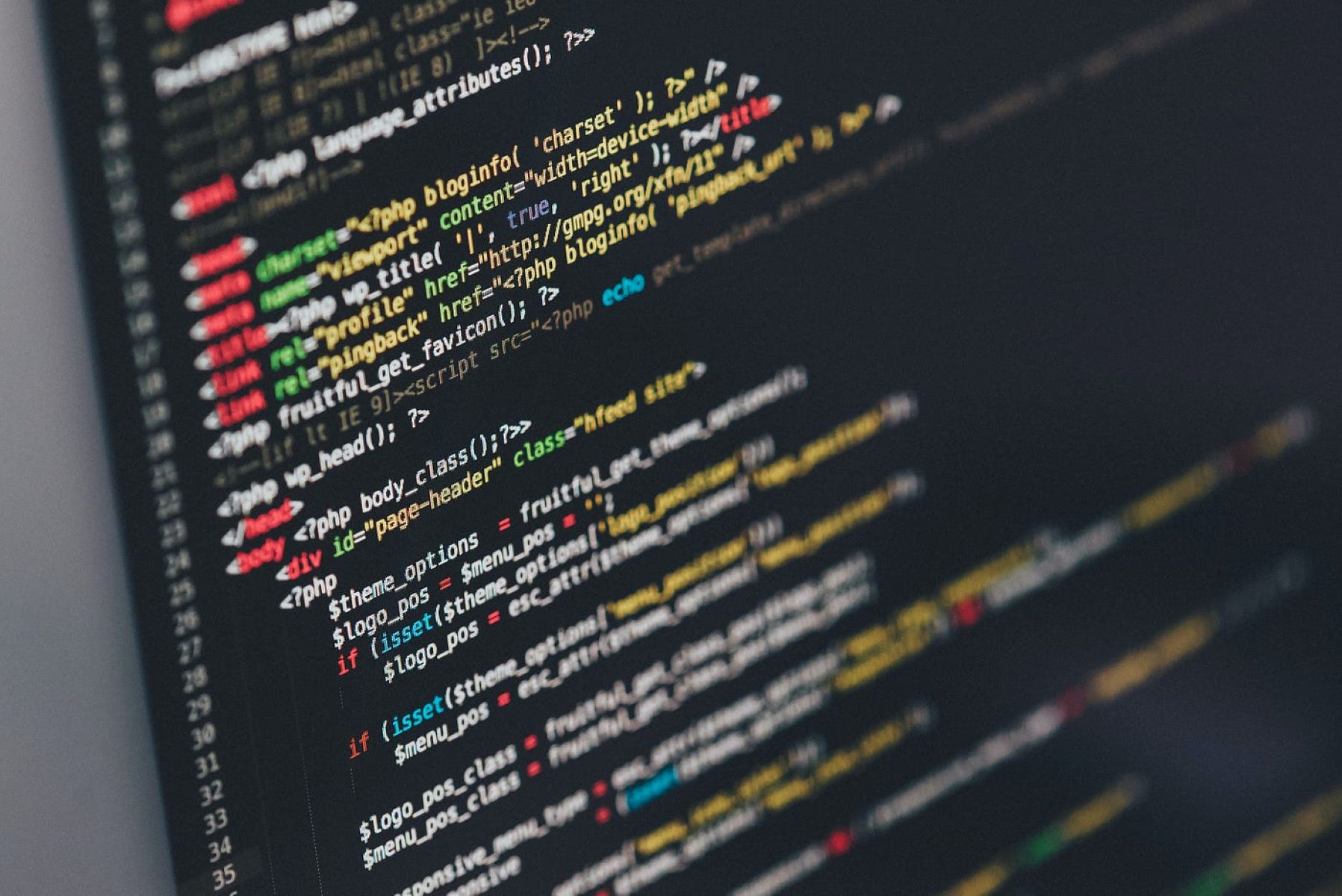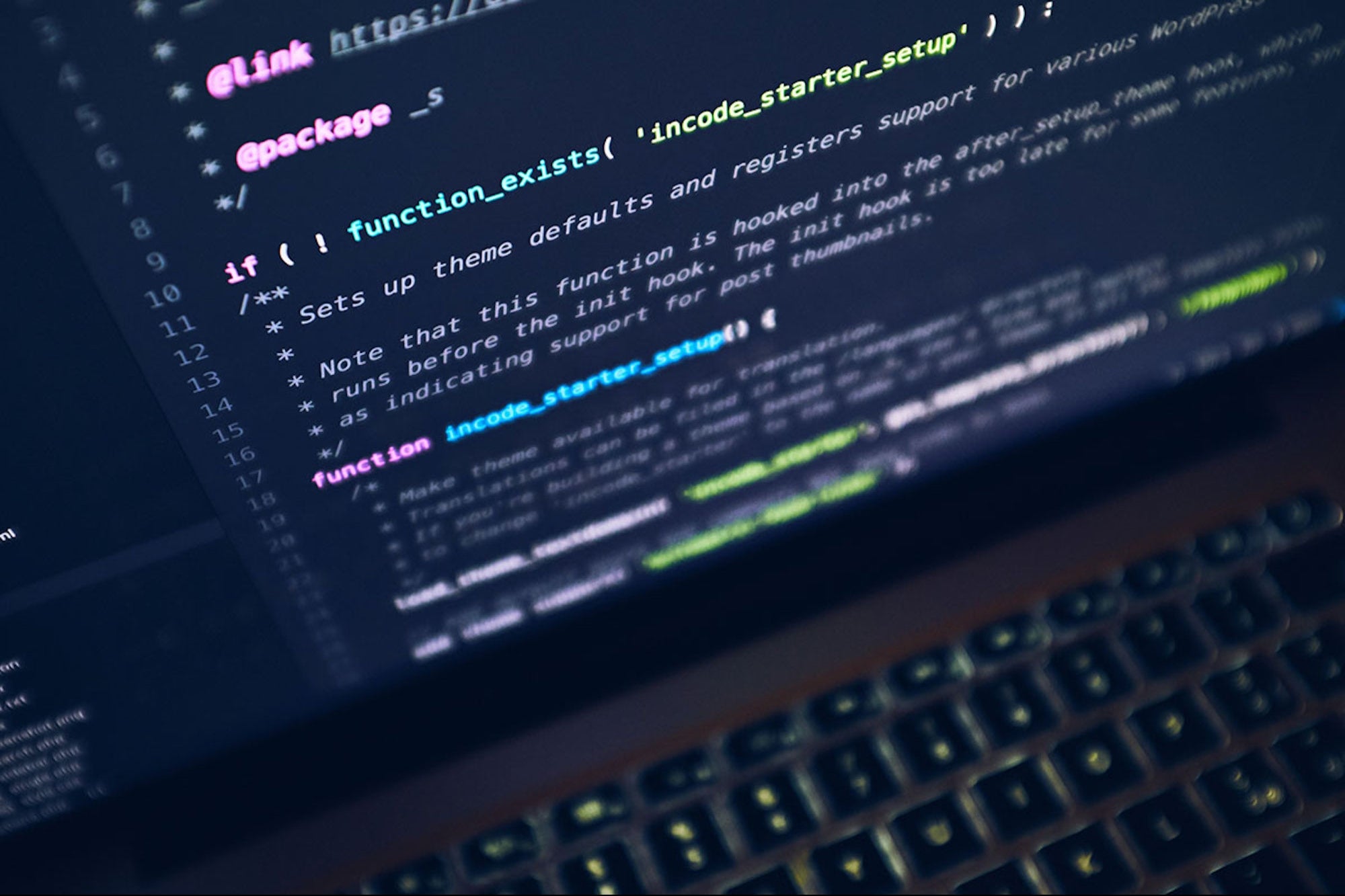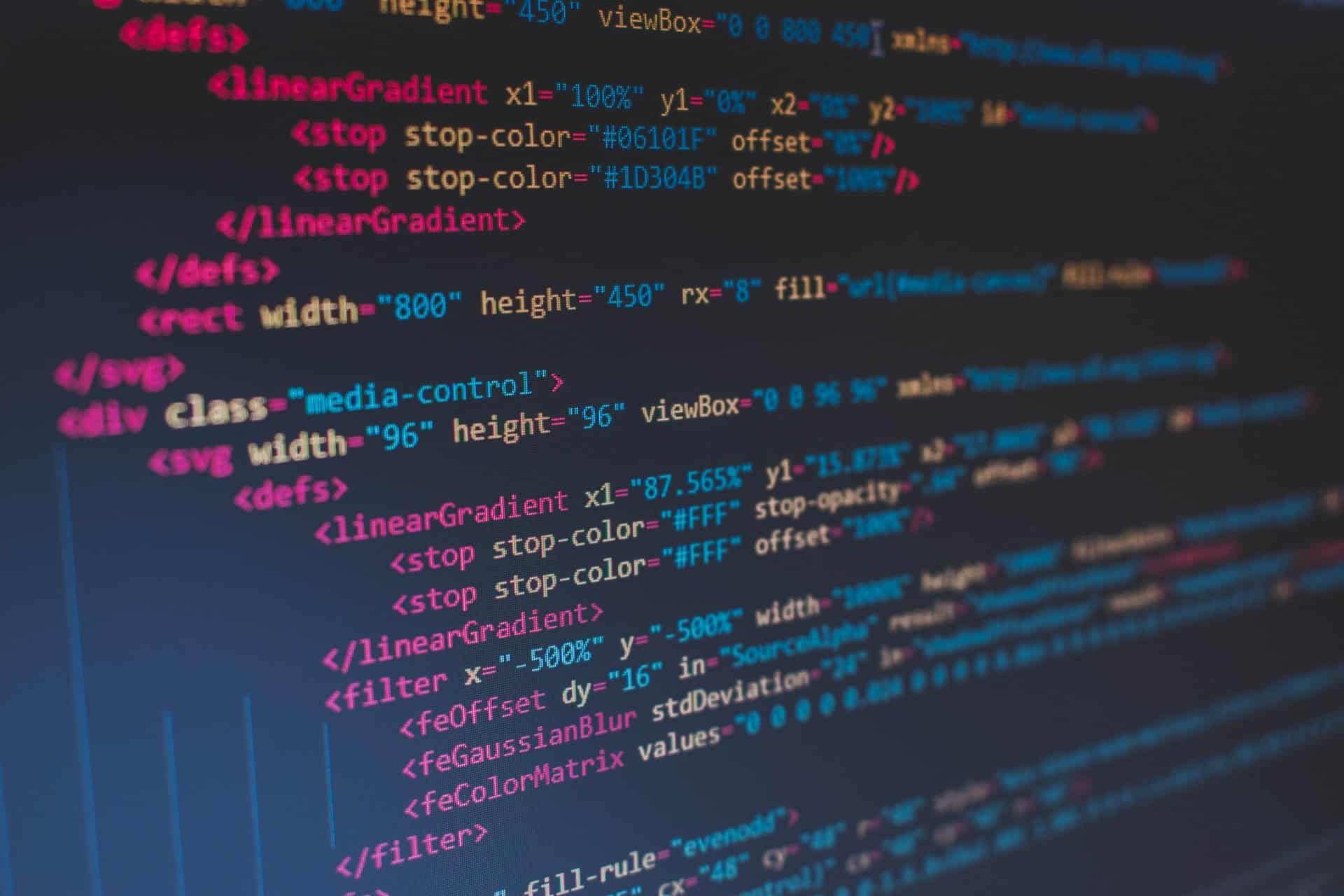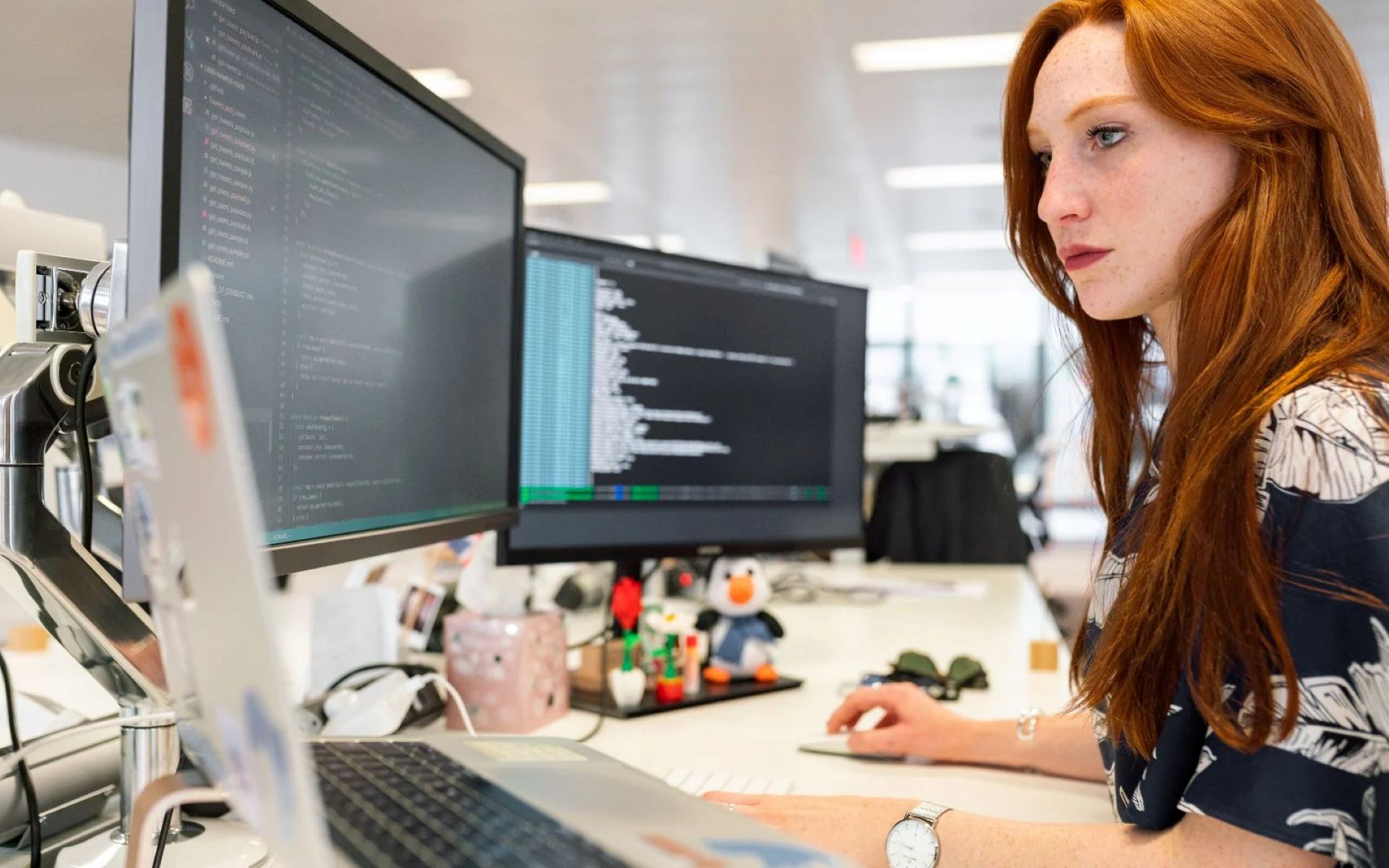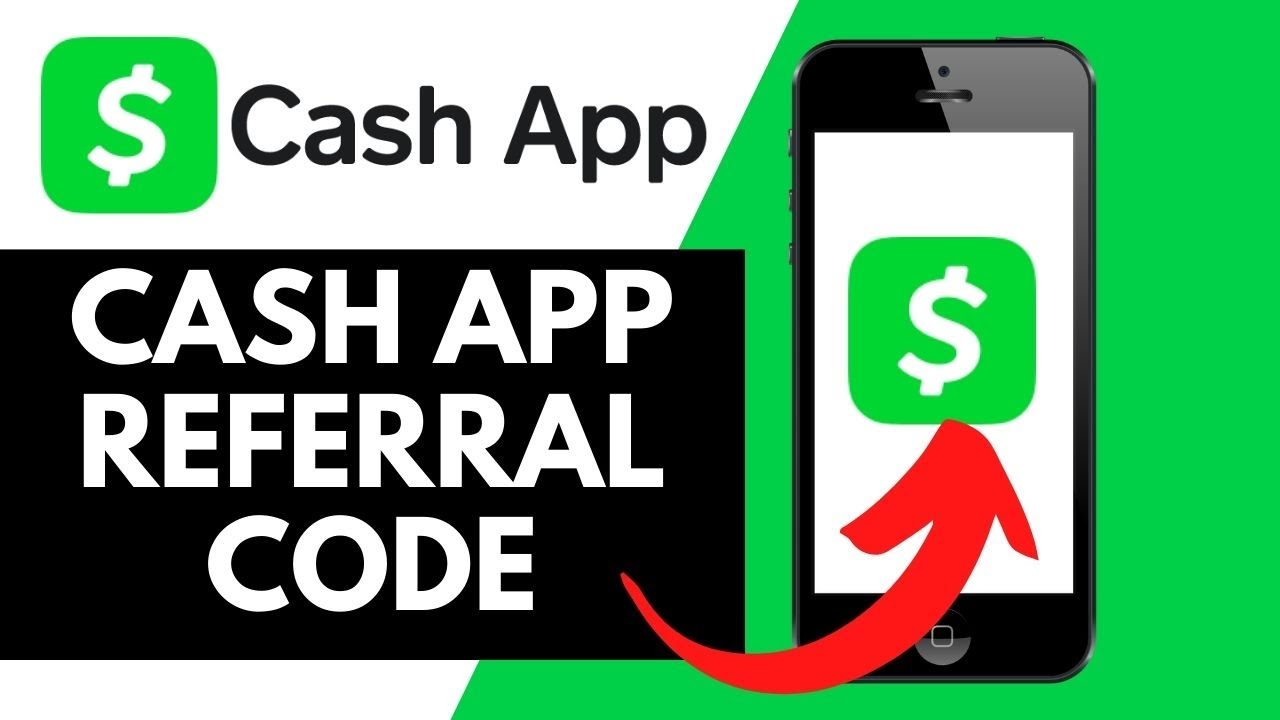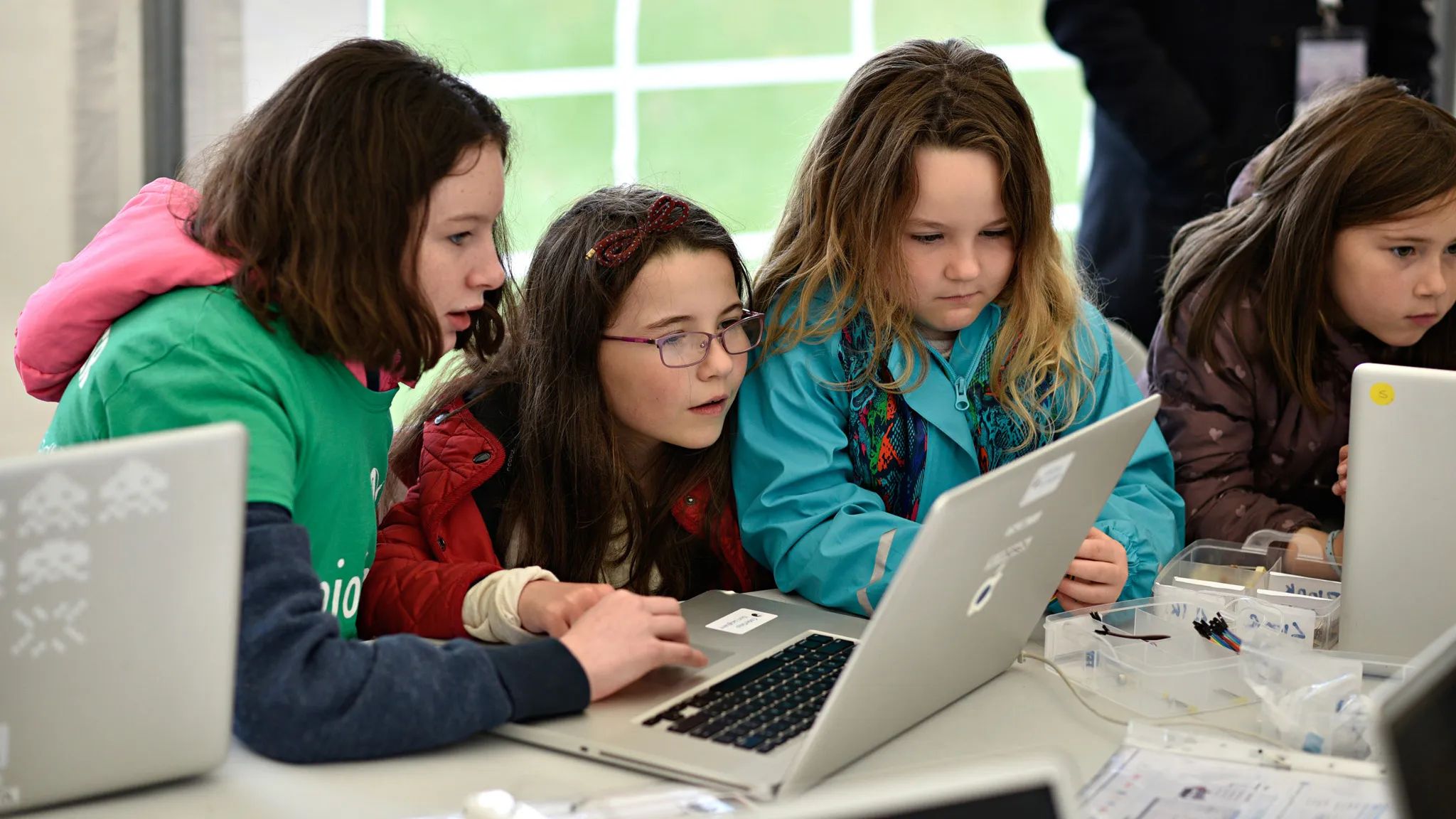Introduction
Welcome to the world of coding! Whether you’re a newbie exploring the realms of programming or someone looking to enhance your existing skills, this guide will help you navigate the exciting journey of coding.
Coding, also known as computer programming, involves writing instructions that computers can understand and execute. It is the backbone of software development and powers the technology we rely on every day.
Learning to code can not only open up numerous career opportunities, but it also allows you to bring your creative ideas to life. From building websites and mobile apps to developing games or creating data-driven solutions, coding empowers you to shape the digital world.
In this guide, we will walk you through the essential steps to get started on your coding journey. We’ll cover everything from choosing a programming language to setting up your development environment, and from learning the basics to building your coding portfolio.
Whether you aspire to become a professional developer or simply want to gain a working knowledge of coding, this guide will provide you with the foundation you need to succeed.
So, without further ado, let’s dive in and discover the amazing world of coding!
Choosing a Programming Language
When embarking on your coding journey, one of the first decisions you’ll need to make is choosing a programming language to start with. The programming language you choose will determine the types of projects you can work on and the career opportunities available to you. With a myriad of programming languages out there, it can be overwhelming to narrow down your options. Here are a few key factors to consider when making your decision:
1. Your goals and interests: Think about the specific goals you have in mind for learning to code. Are you interested in web development, game development, data analysis, or mobile app development? Different programming languages are better suited for specific areas. For example, if you want to build interactive and dynamic websites, languages like HTML, CSS, and JavaScript would be essential.
2. Learning curve: Consider the difficulty level and learning curve of programming languages. Some languages, like Python or JavaScript, are known for their readability and ease of use, making them a good choice for beginners. Others, like C++ or Java, may have a steeper learning curve but offer more flexibility and performance.
3. Job market demand: Research the demand for programming languages in the job market. Look for languages that are in high demand and align with your career aspirations. Platforms like Stack Overflow and job search websites can provide insights into the popularity and job availability for different programming languages.
4. Community and resources: Consider the availability of learning resources, online communities, and support for the programming languages you’re interested in. Engaging with a vibrant community can provide valuable insights, help you overcome challenges, and inspire you to keep learning.
Remember, choosing a programming language is not a lifelong commitment. As you gain experience and expand your skills, you can always learn new programming languages. The important thing is to start with a language that aligns with your goals, interests, and learning style.
Now that you have a good grasp of the factors to consider when choosing a programming language, let’s move on to the next step: setting up your development environment.
Setting Up Your Development Environment
Once you’ve decided on a programming language to learn, the next step is to set up your development environment. A development environment, also known as an Integrated Development Environment (IDE), is a software application that provides tools and features to help you write, test, and debug your code efficiently.
Here are the key steps to setting up your development environment:
1. Install the necessary software: Start by installing the programming language-specific software and tools required to write and run code. This may include a text editor or an IDE, a compiler or interpreter, and any additional libraries or frameworks that are specific to your chosen language.
2. Configure your environment: Once you have installed the necessary software, take some time to configure your development environment according to your preferences. Customize the text editor or IDE layout, set up syntax highlighting, and configure code formatting options to make your coding experience more comfortable and efficient.
3. Install version control software: Version control software, such as Git, is essential for tracking changes in your code, collaborating with others, and maintaining a backup of your work. Install and set up a version control system to ensure the safety and integrity of your codebase.
4. Explore additional tools: Depending on your programming language and project requirements, there may be additional tools or libraries that can enhance your development process. Research and explore popular tools within the programming community to discover additional resources that can streamline your workflow.
5. Practice with small projects: The best way to get comfortable with your development environment is to start practicing with small coding projects. Begin with simple exercises or tutorials that allow you to apply the concepts you’ve learned and get hands-on experience using your development environment.
Setting up your development environment can be a bit overwhelming at first, but it’s an essential step in your coding journey. Once you have everything in place, you’ll be ready to dive into the exciting world of coding and start creating your own projects.
Now that your development environment is ready, let’s move on to the next section: learning the basics of coding.
Learning the Basics of Coding
Now that you have your development environment set up, it’s time to dive into learning the basics of coding. Building a strong foundation in programming concepts will empower you to write clean and effective code as you progress in your journey. Here are some steps to help you get started:
1. Understand basic programming concepts: Familiarize yourself with fundamental programming concepts such as variables, data types, operators, conditionals, loops, and functions. These concepts form the building blocks of coding and are essential for understanding how programs work.
2. Start with a structured learning resource: To ensure a systematic learning approach, start with a structured resource such as online coding tutorials, interactive coding courses, or textbooks. These resources will guide you through the learning process, introduce important concepts in a logical manner, and provide hands-on exercises to reinforce your understanding.
3. Practice coding exercises: Hands-on practice is crucial for cementing your coding skills. Solve coding exercises and challenges to apply the concepts you’ve learned. Platforms like Codecademy, LeetCode, and HackerRank offer a wide range of coding exercises to help you practice and improve your coding abilities.
4. Collaborate and seek feedback: Join coding communities, participate in coding forums or meetups, and collaborate on coding projects with others. This not only enhances your learning experience but also exposes you to different coding styles, problem-solving approaches, and valuable feedback from experienced developers.
5. Build small projects: Once you have a grasp of the basics, start building small projects to solidify your understanding and gain practical experience. Choose projects that align with your interests and allow you to apply the concepts you’ve learned. This will help you develop your problem-solving skills and showcase your work to potential employers or clients.
6. Learn from real-world examples: Study and analyze existing code written by experienced developers. Open-source projects on platforms like GitHub provide valuable insights into best practices, coding patterns, and project structures. Analyzing code written by others can broaden your understanding and inspire you to write more efficient and modular code.
Remember, learning to code is not a sprint, but a marathon. Coding requires patience, persistence, and continuous learning. Embrace the mindset of a lifelong learner and be open to new technologies and programming languages.
Now that you have a solid understanding of the basics, let’s move on to the next section: starting simple projects.
Starting Simple Projects
Now that you have familiarized yourself with the basics of coding, it’s time to start putting your skills to work by embarking on simple coding projects. Starting small allows you to practice your knowledge, gain confidence, and gradually tackle more complex projects. Here’s how you can get started:
1. Define project goals: Start by defining the goals and objectives of your project. Clearly identify what you want to achieve and what problem you want to solve. Having a clear vision and goal will keep you focused and motivated throughout the project.
2. Plan your project: Break down your project into smaller tasks or modules. Outline the functionality and features you want to include. This helps you organize your work and approach the project in a systematic manner. Consider using flowcharts or diagrams to visualize the structure and flow of your project.
3. Seek inspiration: Look for inspiration and ideas from existing projects or real-world problems. Explore websites, open-source projects, or coding communities to see what others have built. This can inspire you, provide valuable insights, and help you understand different strategies and approaches to problem-solving.
4. Start coding: Begin writing the code for your project. Break down the tasks into manageable chunks and tackle them one at a time. Use the programming language you have chosen and apply the concepts and techniques you have learned. Don’t be afraid to consult documentation or online resources to help you overcome any challenges you may encounter along the way.
5. Test and debug: As you complete different sections of your project, regularly test and debug your code. Identify and fix any errors or unexpected behavior. Testing ensures that your project functions as intended and helps you gain confidence in your coding abilities.
6. Iterate and improve: Once you have a working version of your project, take the opportunity to iterate and improve it. Refactor your code to make it cleaner and more efficient. Consider incorporating user feedback or implementing additional features to enhance the functionality and user experience.
7. Showcasing your work: Once your project is complete, showcase it in your coding portfolio. Take screenshots, write documentation, and create a readme file to explain the project’s purpose, functionality, and any instructions for others to use or contribute to your project.
Starting simple projects not only allows you to apply your coding skills but also helps you gain confidence and experience. Remember, learning is a continuous process, and each project you work on will contribute to your growth as a developer.
Now that you have learned how to start simple projects, let’s explore the next section: finding resources and support.
Finding Resources and Support
As you venture further into your coding journey, it’s essential to have access to reliable resources and a supportive community. Having the right resources and support can accelerate your learning, provide guidance when facing challenges, and connect you with like-minded individuals. Here are some tips for finding resources and support:
1. Online learning platforms: Take advantage of online learning platforms like Udemy, Coursera, and Codecademy. These platforms offer a vast array of coding courses and tutorials that cater to different skill levels and programming languages. Explore different courses and learning paths to find the ones that align with your goals and learning preferences.
2. Documentation and official guides: Programming languages often have extensive documentation and official guides that provide detailed explanations of the language’s features, functions, and best practices. These resources are invaluable references when you encounter new challenges or need clarification on specific concepts.
3. Coding communities and forums: Engage with coding communities and forums to connect with fellow developers, ask questions, share your insights, and seek advice. Communities like Stack Overflow, GitHub, and Reddit have active and helpful communities where you can find answers and support.
4. Meetups and coding events: Attend local coding meetups, workshops, or coding events in your area. These gatherings are great opportunities to network with experienced developers, learn from industry professionals, and collaborate with like-minded individuals. Websites like meetup.com can help you find coding events in your city.
5. Coding bootcamps: Consider enrolling in a coding bootcamp if you prefer a structured and intensive learning experience. Bootcamps provide comprehensive coding programs with expert guidance, mentorship, and real-world project experience. They can fast-track your learning and provide you with a solid foundation in coding.
6. Online coding communities: Join online coding communities and forums to connect with developers from around the world. Platforms like GitHub, GitLab, and Bitbucket allow you to collaborate on projects, contribute to open-source software, and learn from the coding community.
7. YouTube tutorials and coding blogs: Explore YouTube tutorials and coding blogs to access free coding resources, tutorials, and walkthroughs. Many experienced developers create video tutorials or write blog posts to share their knowledge and help others learn to code.
Remember, everyone’s coding journey is unique, and finding the right resources and support system may take some time. Experiment with different resources, engage in communities, and be proactive in seeking help when you need it. Building a strong network and learning from experienced developers will accelerate your growth as a coder.
Now that you know how to find resources and support, let’s focus on building your coding portfolio in the next section.
Building Your Coding Portfolio
A coding portfolio showcases your skills, projects, and accomplishments to potential employers, clients, or collaborators. Having a strong portfolio not only demonstrates your capabilities but also provides tangible evidence of your coding expertise. Here are some steps to help you build an impressive coding portfolio:
1. Select your best projects: Choose the projects that showcase your skills and highlight your strengths. Include a variety of projects that demonstrate your versatility and proficiency in different programming languages or technologies. Select projects that are complete, functional, and well-documented.
2. Showcase your code: Include the source code of your projects in your portfolio. Organize the code repository using version control systems like GitHub. Providing access to your code allows potential employers to assess your coding practices, programming style, and ability to work collaboratively.
3. Provide project descriptions: Write brief descriptions of each project in your portfolio. Explain the purpose, functionality, and key features of the project. Include relevant technologies used, challenges faced, and solutions implemented. Use this opportunity to showcase your problem-solving skills and demonstrate your understanding of project planning and execution.
4. Include project demos and screenshots: Whenever possible, include live demos or screenshots of your projects. This visual representation provides a better understanding of the project’s user interface, functionality, and design. Demonstrating your projects in action gives potential employers or clients a more engaging and immersive experience.
5. Highlight your contributions: If you have collaborated on open-source projects or worked as part of a team, highlight your specific contributions. Describe the role you played in the project, the problems you solved, and the impact of your work. Showcase your ability to collaborate with others and your understanding of version control and issue tracking systems.
6. Write about your learning process: Share your learning journey and the lessons you’ve gained from each project. Discuss the challenges you encountered, how you overcame them, and what you learned in the process. Reflecting on your experiences shows your growth as a developer and your willingness to continuously learn and improve.
7. Continuously update and refine: Regularly update your coding portfolio with new projects, skills, certifications, or experiences. As you progress in your coding journey, add more challenging or advanced projects to showcase your expanding abilities. Strive to continuously improve and refine your portfolio to reflect your current skillset and expertise.
Remember, your coding portfolio is an ongoing project that evolves and grows alongside your coding skills. Regularly review and update it to ensure that it accurately represents your abilities and aspirations as a developer.
Now that you know how to build a coding portfolio, let’s move on to the next section: continuing your coding journey.
Continuing Your Coding Journey
Once you have established a solid foundation in coding and built a portfolio, it’s important to continue your coding journey to further enhance your skills and stay up to date with industry trends. Coding is an ever-evolving field, and there is always something new to learn. Here are some steps to help you continue your coding journey:
1. Stay updated with new technologies: Keep yourself informed about the latest programming languages, frameworks, libraries, and tools. Follow coding blogs, subscribe to newsletters, and join coding communities to stay up to date with emerging technologies and industry trends.
2. Follow online tutorials and courses: Engage in online tutorials, courses, and coding challenges to continue expanding your knowledge. Platforms like Udemy, Coursera, and Codecademy offer a wide range of courses for different skill levels and interests. Invest time in exploring advanced topics or specialized areas that align with your career goals.
3. Contribute to open-source projects: Contribute to open-source projects on platforms like GitHub. This not only allows you to collaborate with experienced developers but also builds your reputation and establishes credibility in the coding community. Contributing to open-source projects gives you practical exposure to real-world codebases and helps you develop valuable teamwork and problem-solving skills.
4. Build complex projects: Challenge yourself by taking on complex projects that push the boundaries of your knowledge. Building ambitious projects will help you apply advanced concepts and problem-solving techniques. It also showcases your ability to tackle and overcome technical challenges.
5. Attend coding conferences and webinars: Attend coding conferences, webinars, and workshops to learn from industry experts, network with professionals, and gain insights into the latest technologies and best practices. These events provide valuable opportunities for learning, exchanging ideas, and making connections within the coding community.
6. Seek mentorship: Look for mentors who can guide you and provide feedback on your coding projects. A mentor can offer valuable insights, help you navigate challenges, and provide guidance on your coding journey. Engage with coding communities or join mentorship programs to find experienced professionals who are willing to support and mentor you.
7. Build real-world applications: Apply your coding skills to real-world applications. Identify problems in your daily life or in your community that can be solved through technology. Building real-world applications not only strengthens your coding abilities but also allows you to make a positive impact through your skills.
Remember, the coding journey is a lifelong learning process. Embrace continuous learning, challenge yourself, and explore new technologies and opportunities. By staying curious and proactive, you can continue to grow as a developer and make meaningful contributions to the coding community.
Now that you have the tools to continue your coding journey, you are well equipped to excel in the ever-evolving world of coding!
Conclusion
Congratulations on embarking on your coding journey! You have learned about choosing a programming language, setting up your development environment, learning the basics of coding, starting simple projects, finding resources and support, building your coding portfolio, and continuing your coding journey. Remember, this is just the beginning.
Coding is a dynamic and ever-evolving field that requires continuous learning and adaptation. As you progress, embrace new technologies, stay curious, and remain dedicated to honing your skills. Coding offers endless possibilities, from creating innovative solutions to tackling real-world challenges.
Seek out communities, online tutorials, and mentorship opportunities to connect with fellow coders and learn from experienced professionals. Building projects, contributing to open-source, and attending coding events will further strengthen your skills and expand your network.
Remember, the path to becoming a proficient coder may have its challenges and hurdles, but with determination, perseverance, and a growth mindset, you can overcome them and achieve your goals.
So, what are you waiting for? Start coding, explore your passions, and let your creativity soar. The world of coding is boundless, and your potential is limitless. Good luck on your coding journey, and enjoy the exciting adventure ahead!







